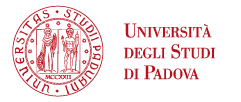Research centers
Centre for Studies on Alpine Environment
The centre was founded in 1962 and located in San Vito di Cadore, in the heart of the Dolomiti mountains, and since then it has been an important research site for forest ecology.
Studies are carried out on the eco-physiology of the main forest species, in order to understand their sensitivity to the environmental factors at different altitudes up to the timberline and on the forest soil, a key factor in preventing floods.
Remote wireless connection with the installed instruments, a recently improved weather station and efficient laboratories make the centre a modern research station. Our researchers also developed the patented tree sampler Trephor, an innovative tool allowing high quality sample collection with a very low tree damage.
Thanks to its structures and expertise, C.S.A.I. is now a reference point for studies on the Alpine environment within the University of Padova and it is involved in collaborations with several administrative bodies as well as with both other national and international research institutions.
Interdepartmental Research Centre for Cartography, Photogrammetry, Remote Sensing and GIS (CIRGEO)
CIRGEO is a research lab studying geomatics applied to surveys of road accidents, cultural heritage conservation, environmental surveys with digital photos, bathimetric surveys of sea beds and archaeological finds. The centre promotes international workgroup exchange by participating at and hosting workshops and conferences.
Interdepartmental Research Center for Viticulture and Enology (CIRVE)
The centre is part of the University of Padova’s campus located in Conegliano (Treviso), in the production area of the wine Prosecco. Its research activities are concerned with the economics of producing and marketing wine, oenology, wine chemistry, wine microbiology and viticulture.
CONTAGRAF, namely the Inter-University Center for Agricultural, Forestry and Environmental Accounting and Management, was established in 1967 as the Veneto Center for Agricultural Accounting and Farm Management of the University of Padova through an agreement between universities and agricultural associations, with the aim of developing research and methodologies for the detection, classification and processing of data necessary for agricultural accounting, management and operational research. Since 2000, it assumed its current name with an agreement between the Universities of Padova, Bologna, Perugia, Trento and the University of Tuscia (Viterbo), also expanding its areas of expertise to include environmental and forestry accounting. In 2018, CONTAGRAF further expanded with the University of Molise and the University of Udine. Since 2016, the CONTAGRAF Administrative Coordination Office is housed at the Department of Land, Environment, Agriculture and Forestry (TESAF) of the University of Padova.
Irrigation Technologies Laboratory (Irricentre).
The Irricentre studies innovative irrigation systems that have the potential to maintain or improve crop production levels while reducing the adverse effects on the environment. Recent activities concerned irrigation of chicory with a low environmental impact sprinkler system, low environmental impact technologies for livestock waste distribution on maize, vineyard irrigation, subirrigation with air injection and laboratory and field tests on most common sprinklers in use.





